IMS Instruction Sessions Spring 2016
Where is MC 205? Per campus map, Miller Center 205 is on the second floor, direction computer lab, right-handside, pass the counter with printers on both sides. Please use this virtual reality direction map to find the room (use Google Chrome and activate QuickTime plugin).
please have a link to a PDF copy print out instruction sessions spring 2016
Dreamweaver: 4 Mondays – 10-10:45AM . Jan 18, 25, Feb 1, 8 ; location MC 205. attendees cap is 5
Keywords: web development, web design, Adobe Dreamweaver
Description: Adobe Dreamweaver CC is the default web development tool on campus. In four consecutive weeks, learn the basics of Dreamweaver, web development, web design and maintaining web pages on the Web. Site map and site structure. HTML and HTML5 basics, basics of CSS, page properties, text editing, hyperlinks and images, tables, forms.
Remote participation through desktopsharing at http://scsuconnect.stcloudstate.edu/ims upon registration and specific request
Photoshop: 4 Tuesdays – – 10-10:45AM . Jan 19, 26, Feb 2, 9 ; location MC 205. attendees cap is 5
Keywords: image processing, image editing, visual literacy, Adobe Photoshop
Description: In four 45 min sessions, learn the basics of image editing. A comprehensive understanding of Adobe Photoshop and its essential tools. Design and edit, adjusting images for the Internet and print outs. Learn image formats, compressions, layers. Retouching, repairing and correcting photos
Remote participation through desktopsharing at http://scsuconnect.stcloudstate.edu/ims upon registration and specific request
Social Media in Education 9:30-10:15 AM. Feb 3, 10, 17, 24. location MC 205. attendees cap is 15
Keywords: social media, social media in education, social media and learning, social media and teaching, social media and communication, Facebook, Twitter, Instagram, LinkedIn, YouTube, Diigo, Delicious, Evernote, SideVibe, Pinterest, Vine, Snapchat, Google+, Zotero, Mendeley, blogs, wikis, podcasts, visuals, text
Description: In four 45 min sessions, structure your approach to social media and assess how to use in teaching and learning. What is social media and how to use it. How to discriminate between personal and professional use of social media. Amidst 180 most popular social media tools, acquire a robust structure to cluster them and orient yourself quick and easy, which tools fit best your teaching materials and methods to enable learning and communication with your students. Visuals versus text and how to combine them for effective communication and teaching. Policies, engagement of students. Expanding and improving research and organization of your research through social media and networking toward your research through social media.
Remote participation through desktopsharing at http://scsuconnect.stcloudstate.edu/ims upon registration and specific request
Cheating: what, why and how to avoid: Jan 28, 10-10:45AM . location MC 205. attendees cap is 15
Keywords: cheating, academic dishonesty, academic integrity, plagiarism.
Description: in 45 minutes we can start a conversation about identification of cheating practices and determination of what plagiarism is, considering generational differences, the evolution of the Internet. Identifying of “cheating” can provide robust boundaries for understanding students’ behavior and identifying practices and methods to alleviate such behavior, including change of teaching methods and practices.
Remote participation through desktopsharing at http://scsuconnect.stcloudstate.edu/ims upon registration and specific request
10 basics steps to start social media. March 16, 11-11:45AM location MC 205. attendees cap is 15
Keywords: social media, social media in education, social media and learning, social media and teaching, social media and communication, Facebook, Twitter, Instagram, LinkedIn, YouTube, Diigo, Delicious, Evernote, SideVibe, Pinterest, Vine, Snapchat, Google+, Zotero, Mendeley, blogs, wikis, podcasts, visuals, text
Description: introduction to social media and its use for personal and professional purposes. Ideas and scenarios of using different social media tools in education. Hands-on exercises for using social media in teaching.
Remote participation through desktopsharing at http://scsuconnect.stcloudstate.edu/ims upon registration and specific request
Games and Gamification in Education. Feb 24 2-2:45PM, March 25, 10-10:45AM, April 14, 2-2:45PM MC 205, attendees cap is 5
Keywords: play, games, serious games, game-based learning, gaming, gamification.
Description: Gaming and Gamification is one of the most pronounced trends in education as per the New Horizon Report. Besides the increase of participation and enthusiasm, it increases learning. Introduction to gaming and gamification by establishing definitions, learning to distinguish gaming and gamification and learning the basics of gaming and gamification in the teaching process. Hands-on exercises for introducing gaming practices in the teaching and learning process and gamifying the existing syllabi.
Remote participation through desktopsharing at http://scsuconnect.stcloudstate.edu/ims upon registration and specific request
Teaching Online. Jan. 29. 10-10:45AM. Feb 18, 2-2:45PM, March 30, 3-3:45 PM MC 205. attendees cap is 5.
Keywords: online teaching, mobile teaching, distance education, distributive learning, hybrid learning, hybrid teaching, blended learning
Description: this 45 min session is aimed to help you transition your F2F teaching to hybrid and online teaching. Learn about synchronous and asynchronous modes of teaching and communication to structure and organize your class materials and methods for better delivery. Hands-on exercises for improving content delivery, class discussions and communications among instructor and students.
Remote participation through desktopsharing at http://scsuconnect.stcloudstate.edu/ims upon registration and specific request
Effective Presentations. Jan 28, 2-2:45PM. MC 205. attendees cap is 10
Keywords: presentations, PowerPoint, alternatives to PowerPoint, presentation design, presentation essentials, Prezi, SlideShare, LodeStar, Zentation, Zoho, Powtoon, Zaption, Thinglink, Haiku, Kahoot, Storify, EdPuzzle, PollDaddy, Evernote, Mammoth, SideVibe, Paddlet, Remind, Death by PowerPoint, visual literacy, media literacy, digital literacy, visuals
Description: https://blog.stcloudstate.edu/ims/2016/01/07/effective-presentations/ . These four 45 minute sessions are aimed to introduce and orient faculty, staff and students to the opulence of alternatives to PowerPoint and revisit the basics of well-tailored presentation. Hands-on exercises for improving the structure and delivery of presentation as well as the choice of presentation tools.
Remote participation through desktopsharing at http://scsuconnect.stcloudstate.edu/ims upon registration and specific request
Death by PowerPoint. Feb 26, 10-10:45PM. MC 205. attendees cap is 10
Keywords: presentations, PowerPoint, alternatives to PowerPoint, presentation design, presentation essentials, Death by PowerPoint, visual literacy, media literacy, digital literacy, visuals.
Description: https://blog.stcloudstate.edu/ims/2016/01/07/effective-presentations/ . This 45 minute session is aimed to introduce and orient faculty, staff and students to the basics of PowerPoint and revisit the basics of a well-tailored presentation. Hands-on exercises for improving the structure and delivery of presentation as well as the choice of presentation tools.
Remote participation through desktopsharing at http://scsuconnect.stcloudstate.edu/ims upon registration and specific request
Contemplative Computing or Disconnect: How to Bring Balance in Your Life by Managing well Your Technology. Feb 17. 2-2:45PM. MC 205. attendees cap is 10
Keywords: disconnect, Sherry Turkle, contemplative computing, mediation, contemplative practices, balance, technology stress
Description: this 45 min session introduces faculty, staff and students to the idea of regulating the use of technology in a meaningful way. Hands-on exercises and sharing good practices on balancing the use of technology in daily life.
Remote participation through desktopsharing at http://scsuconnect.stcloudstate.edu/ims upon registration and specific request
Videos in the classroom: fast and easy. Jan 28, 10-10:45PM. MC 205. attendees cap is 5.
Keywords: video, video editing, video manipulation, visual literacy, digital literacy, MovieMaker, iMovie, Instagram, Vine, YouTube, Kaltura
Description: this 45 min session is an orientation to the resources available for delivery of visual materials in the classroom. Hands-on experience of different basics tools on different computer platforms.
Remote participation through desktopsharing at http://scsuconnect.stcloudstate.edu/ims upon registration and specific request
Voice Over presentations: solutions. Feb 4, 10-10:45PM. MC 205. attendees cap is 5.
Keywords: PowerPoint, VoiceThread, LodeStar, MediaSpace (Kaltura), audio editing, narration
Description: https://blog.stcloudstate.edu/ims/2015/04/28/voice-over-presentation-solutions/ . This 45 min session is a short hands-on introduction to the tools available at MnSCU intuitions and free third-party applications for delivery of narrative attached to presentations.
Remote participation through desktopsharing at http://scsuconnect.stcloudstate.edu/ims upon registration and specific request
Infographics: make your projects, presentations and research credible through presentable data. Feb 10, 2-2:45PM. March 29, 10-10:45AM, MC 205. attendees cap is 10
Keywords: Piktochart, Infogr, Visualy, statistics, visual literacy, digital literacy
Description: https://blog.stcloudstate.edu/ims/2014/04/09/infographics-how-to-create-them/. This 45 min session is an orientation to the world of infographics. Short introduction to the basics of statistics and their importance in presenting a research and idea. Hands-on exercise using one of the 3 popular infographic tools.
Short link the information below on the IMS blog: https://blog.stcloudstate.edu/ims/?p=4441 and even shorter one: http://scsu.mn/1RsQErr
Weds 6th–
Session I 10-11:15 Voyageurs North (Atwood)
Title
Engage your students: connect CMS (D2L) to social media to enhance the learning process.
Plamen Miltenoff and Emil Towner
Join us online via Adobe Connect: http://scsuconnect.stcloudstate.edu/ims (please login as a “guest” and use your real name)
Outline
In this rapid succession of examples, one can experience a showcase how to enhance students’ engagement by modernizing D2L experience through connection with social media. Bring your own examples and participate in a discussion, which aims finding the right tools for your class and field of study.
Audience:
beginners to advanced
Prerequisite:
come with your own social media accounts: Facebook, Twitter, Instagram, Pinterest, Vine
Outcomes:
By the end of this session, the participants will have an idea about peculiarity of each of the social media tools: Facebook, Twitter, Instagram, Pinterest, Vine
By the end of the session, the participants will be familiar with the integration of each of the social media tool into D2L
By the end of the session, the participants will be able to asses to what extent each particular tool fits their field of study
By the end of the session, the participants will be able to compare the pedagogical advantages and disadvantages of the social media tools compared to D2L
Useful links to contact us via social media:
IMS blog: https://blog.stcloudstate.edu/ims
IMS Facebook: https://www.facebook.com/InforMediaServices?ref=hl
IMS Twitter: https://twitter.com/SCSUtechinstruc
IMS Pinterest: http://www.pinterest.com/scsutechnology/
IMS Instagram: http://instagram.com/scsutechinstruct
IMS YouTube: https://www.youtube.com/channel/UC_UMIE5r6YB8KzTF5nZJFyA
IMS Google+: https://plus.google.com/u/0/115966710162153290760/posts/p/pub
IMS LinkedIn: http://www.linkedin.com/in/scsuinstructionaltechnology
Plan – Plamen Miltenoff:
Please consider the following survey about your opinion regarding social media in education:
*http://aidemoreto.polldaddy.com/s/social-media-in-education*
please have the short link: http://scsu.mn/1Z8EFFx
most recent contemplations about blogs and social media in general:
https://blog.stcloudstate.edu/ims/2016/01/01/4507/
- D2L and Facebook
What is the problem with D2L? https://blog.stcloudstate.edu/ims/2015/04/09/lms-as-a-concept-under-scrutiny/
Facebook in a learning environment MUST BE conducted using a Facebook group.
Unless the instructor is SPECIFICALLY using h/er FB account strictly for educational reasons and there is no personal content, the instructor can create a class-related group, with their personal FB account. While the account is personal, the FB group has NO access to the personal FB account.
Facebook Page is different from Facebook Group. The first is commercially oriented and thus, not recommended and to a great degree not suitable for educational purposes.
Facebook Provides New Admin Tools for Managing Page Communication
Facebook Improves News Feed for Slower Network Connections:
https://blog.stcloudstate.edu/ims/2015/12/13/improvements-in-social-media-tools/
Facebook group account can be used for: discussions, sharing materials / visuals, calendar
D2L Discussions compared to Facebook Group discussions – http://www.adweek.com/socialtimes/facebook-groups-pages/313736
D2L content compared to Facebook Group Wall
D2L calendar compared to FB calendar
D2L news RSS compared to FB Group alert.
- D2L and Twitter
microblogging of 140 characters is often viewed as limiting. However, it can be the ultimate test how well students understand the learning material: making someone sum up in 140 characters what they learned this particular week in their class can take a lot of rewriting.
D2L allows a widget on its main page, where students can view and tweet. Students also can view and tweet from their mobile devices.
Tweeting during class is becoming mainstream in K12, also called “backchanneling.” Harnessing peers help to understand a concept discussed in class can save both time and efforts on the instructors’ side
Twitter is “making your twitter.com timeline more immersive by uncropping photos, so you can experience and present them as they were meant to be viewed.” https://blog.stcloudstate.edu/ims/2015/12/13/improvements-in-social-media-tools/
- D2L and Instagram
Instagram is a social media service, which allows both still images and videos (15 sec).
The bottom-line to evaluate if fitting your field of study is: can the content be narrated or is it much better if visualized. If the latter, Instagram can be your salvation for quick and dirty way to bring imagery, instead of trying to explain by words.
https://blog.stcloudstate.edu/ims/2014/10/14/instagram-apps/
Instagram can be shared vertically across Facebook, Twitter, Google+ and other platforms.
https://blog.stcloudstate.edu/ims/2014/09/25/pinterest-and-instagram/
Instagram in the classroom
https://blog.stcloudstate.edu/ims/2014/09/15/instagram-in-the-classroom/
Master Instagram in 8 Simple Steps https://blog.stcloudstate.edu/ims/2014/09/11/how-to-master-instagram-in-8-simple-steps/
- D2L and Pinterest
QR codes are used by Lorie Crane from Nursing as a gamification techniques for students to learn human bones. The disadvantage of the QR codes is that they physically are placed in the classroom. Pinterest can provide the same gamification environment, but the students can access it anywhere/anytime with their mobile devices. The links to the pin[s] can be provided in the D2L : content area (as learning materials/readings), discussion area, News area. They can be also used as part of the D2L quizzes
https://blog.stcloudstate.edu/ims/2014/09/25/pinterest-and-instagram/
Instagram defines and shapes brands while Pinterest sells brands.
Pinterest is about curating and discovering information.
https://blog.stcloudstate.edu/ims/2014/09/25/pinterest-and-instagram/
Using hashtags: https://blog.stcloudstate.edu/ims/2014/07/13/3-things-you-didnt-know-you-can-do-on-pinterest/
16 Ways Teachers Use Pinterest https://blog.stcloudstate.edu/ims/2014/02/10/16-ways-teachers-use-pinterest/
Free Pinterest-Style Education Service Hosts Common Core Teaching Aids https://blog.stcloudstate.edu/ims/2013/11/20/free-pinterest-style-education-service-hosts-common-core-teaching-aids/
Teachers on Pinterest – A Great Resource for Teachers ~ Educational Technology and Mobile Learning https://blog.stcloudstate.edu/ims/2013/11/02/teachers-on-pinterest-a-great-resource-for-teachers-educational-technology-and-mobile-learning/
- D2L and Vine
Vine is a social media services, which provides the ability to share 7 sec videos. Vine is becoming more popular then Instagram (15 sec videos), with the simplicity to create short videos. Students can take sequence of short videos, which amount to 7 sec to reflect the main points of a project. E.g.: chemical reaction, biology dissection, progress of engineering planning, solving a math formula.
URL to the vine can be posted in the D2L discussion area for further collaborative effort or for peers’ and instructions evaluation
Vines are a click away from a FB group page or, with the right handle and hashtag, to a Twitter discussion
The bottom-line to evaluate if fitting your field of study is: can the content be narrated or is it much better if visualized. If the latter, Vine can be your salvation.
How to Create Social Videos With Your Smartphone https://blog.stcloudstate.edu/ims/2015/01/10/social-videos-with-your-smartphone/
- D2L and YouTube, EdPuzzle (https://edpuzzle.com/), etc
YouTube Unveils New Trending Tab
https://blog.stcloudstate.edu/ims/2015/12/13/improvements-in-social-media-tools/
Per SCSU IT disclaimer: MediaSpace (Kaltura) is a free, cloud-based video repository solution for campus that allows faculty and staff to upload and distribute video and audio content for academic or administrative purposes. Facilitators will discuss potential uses of MediaSpace for campus, demonst rate how to create Webcam and screen recordings, upload audio/video, and embed or link to MediaSpace content from D2L or a web site. YouTube is owned by Google and the integration, including statistics and analytics by Google are way beyond MediaSpace. The only selling point of MediaSpace is the FERPA requirement by MnSCU to host privacy data on a MnSCU owned server
- Google+
Google+ is indirect competition with any CMS, D2L included, with its GOogle Classroom platform (https://classroom.google.com/ineligible). K12 and higher institutions are outsourcing to GMAIL and with Google Hangouts (Skype also), one can share video, audio and desktops, which makes Adobe Connect + D2L way behind in integration even before Google Drive is mentioned.
Google Introduces Shared Albums in Google Photos:
https://blog.stcloudstate.edu/ims/2015/12/13/improvements-in-social-media-tools/
8 Ways to Use Google+ Hangouts for Your Business https://blog.stcloudstate.edu/ims/2015/09/23/google-hangouts/You can record hangouts directly to your YouTube channel for future use.For private Google+ Hangouts, choose Google+ Video Hangouts, which allow you to have up to 10 participants in a video chat that is accessible only to the people invited.
Plan – Emil Towner:
- General stats on integrating social media and things to consider
- Integrating LinkedIn Assignments
- Integrating Facebook Groups
- I will show a couple of groups that I have used
- I can also come up with an “exercise” that participants can do, just let me know: (1) if you want me to and (2) if participants are suppose to have a Facebook account that they can log into during the session
===========================================================
Session K 2-3:15: 2PM Wed, Jan 8. Location: CH455
Title
Engage your students: gaming and gamification in the learning process.
Outline
As part of the broader discussion, a short discussion segment to form and agree on definitions and terms regarding games and gamification. Another short segment to seek consensus if this SCSU campus is ready to departure on the path of gamifying education. After several examples, of how games are used in education and gamification techniques, a discussion on how gaming and gamification can be streamlined amidst shrinking budget and increasing workload. More details and information about gaming and gamification at: http://scsu.mn/1F008Re
Audience:
beginners to advanced
Outcomes:
By the end of this session, the participants will have a working definitions on play, games, serious games, game-based learning, digital game-based learning, gaming, gamification and badges. (more at http://scsu.mn/1F008Re)
By the end of the session, the participants will be familiar with the possibilities for integration of games in the educational process and for gamification of the educational process.
By the end of the session, the participants will be able to asses to what extent games and gamification fit their field of study
Plan:
===========================================
Friday 8th
Session M 10-11:15: CH 455
Title
Present and be presented: engage your students with modern ways to share information
Outline
Two trends plague education: the swamp of PowerPoint presentations and the lack of visual literacy. In this rapid succession of examples, one can experience a showcase of various cloud-based tools, which brings visual presentations way beyond PowerPoint and align with the Millennials demand for current social interaction. A discussion on how relevant these tools are to various disciplines and details on improving the interaction among instructors and students during the presentation. Ongoing discussion about design as part of visual literacy and the difference between blended learning and technology integration.
Audience:
beginners to advanced
Outcomes:
By the end of this session, the participants will have understand the movement “Death by PowerPoint” and will understand the advantage of cloud-based presentation tools to MS PowerPoint
By the end of the session, the participants will be familiar with several tools, which successfully replace PowerPoint and well beyond.
By the end of the session, the participants will be able to asses to what extent games and gamification fit their field of study
By the end of the session, the participants will be able to discriminate between technology integration and blended learning.
Plan:
#MNsummit2015
Main speaker
Aaron Doering
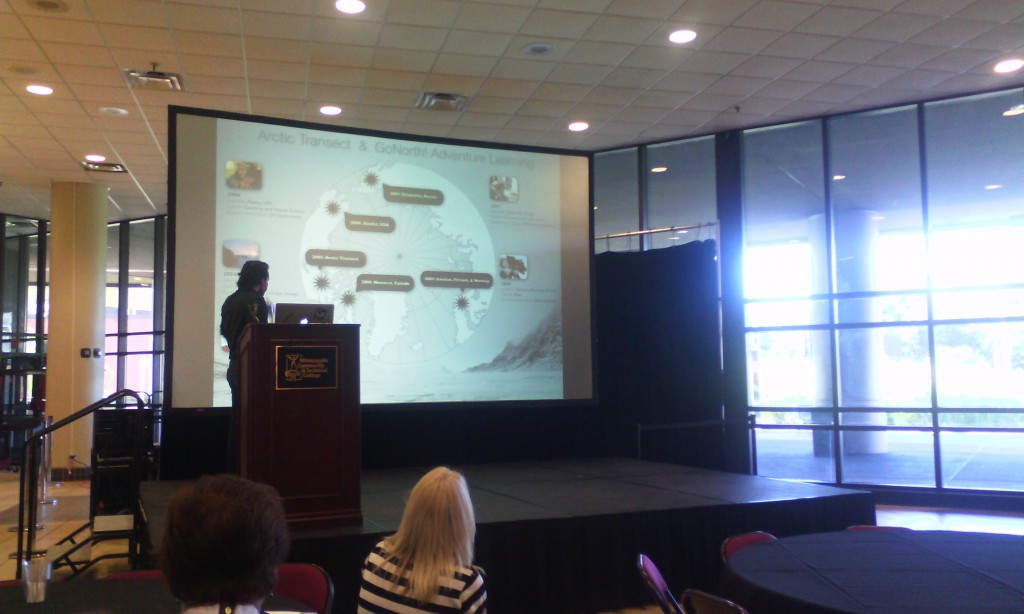
aaron doening
Engagement not completion
Design experience not product
Create change, not simply respond to it
He was a geography teacher : Dimitrina
Experience explore expand. Adventure based how to collaborate in ways we have not collaborated before pedagogical guidelines internet driven
Instructor – content – design
Today: first think is design, content, instructor. So how do we design learning environments is the most important one
Guide learners as designers. Constructivism. Design for meaning. Through the power of the story.
Geotetic design a learning environment learn geography using GIS
Situated movies (student-centered learning)
Grant Earthducation go to the most remote parts of the world to align their education with their culture, instead of what the government is downing as culture
Use of phone: whoever answers instructor’s question first, gets to pose the next question to the rest of the audience.
Design based research
Self-narrative, referencing the experience real world issues in real time
- reference knowledge . knowledge overlap. Technological pedagogical content knowledge.
Geotetic not only how prepare teachers, but desing learning environmwer of the story.
we explore: https://www.we-explore.com/
9.5 design as a learner.
the U Media Lab.
The Changing Earth. App GoX (instagram on steroids. tell their story through the app). How is this different from Google Earth
Raptor Lab (rehabilitate a raptor).
- design experiences
- build trust
- guide learners as designers
- recognize learners as experts
- encourage collaboration
- inspire self narrative
- reference the knowledge domains
- teach for change
- design as learner
adoering@umn.edi chasingseals.com @chasingseals
podcast pontification (audio version of blog self reflections)
Greg Steinke The U
A Digital Story Assignment using WeVideo

WeVideo is the Google response to iMovie cloud
The U is on Google email and thus google drive and all other google tools
The Center for Digital Storytelling. short videos, 3-5 min incorporate photographs with the author narration, reflection
Assignment (verbal directions). process (write a 2 page script, every page is about a minute of video), gather images that support the story; edit the script (rewrite); record audio to the script (use an app on the phone instead of WeVideo), WeVideo can edit the audio recording; edit the story, edit the photos to match the story; YourTube and/or Google+
working with faculty: is the digital story a good fit for your course? two questions: does the course have many writing assignments? does everyone have to do the same type of assignment? do you want to offer choices? do you want your students to share their work outside of the class? to you want to explore opportunities for students to develop 21 century skills?
google communities for sharing
wewideo has a tutorial at Center for Digital Storytelling
students can use the digital story for their eportfolio
the entire exercise is entirely based on mobile devices
time frame: scaffolding options
3d printing products were the tangible result of the project and the digital storytelling just the format to present
Google Drive master folder for the phone images and video; iOS apps: MoviePro, FiLMc Pro, VoiceRecord Pro (including mp3); Android: WeVideo
Storyboard template
Faculty Development Programs: Digital Storytelling Community of Practice
http://it.umn.edu/faculty-development-programs-digital-0
Poster sessions:
Brad Hokanson
http://dha.design.umn.edu/faculty/BHokanson.html
iPAD video kit:

Laurie Conzemius
Critical Thinking

ISTE: http://conference.iste.org/2016/
Joe Lau critical thinking
apps: Popplet blog.popplet.com http://www.popplet.com/ (mindmapping)
into the book: http://reading.ecb.org/
Kahoot – the token system. Polleverywhere https://blog.stcloudstate.edu/ims/2015/05/21/polls-and-surveys-tools-for-education/
Symbaloo https://www.symbaloo.com/home/mix/13eOcK1fiV zotero, easybib, delicious, diigo depending on the grade
youth voices; http://youthvoices.net/ replace social media like teachertube is trying to replace youtube
quandary games in education. https://www.quandarygame.org/ sim city
citizen science alliance http://www.citizensciencealliance.org/
Toontastic https://itunes.apple.com/us/app/toontastic/id404693282?mt=8 now free storytelling
coding and programming: https://www.makewonder.com/robots/dashanddot scratch
Osmo : https://www.playosmo.com/en/ $79.99 + give a set for free Stride principle as a parental involvement
chainlink;
kickword; https://play.google.com/store/apps/details?id=com.makario.wordkick
red herring (four categories) https://play.google.com/store/apps/details?id=com.BlueOxTech.RedHerring&hl=en
http://www.mathplayground.com/logicgames.html
http://www.mathplayground.com/thinkingblocks.html
evaluation:
telestory https://itunes.apple.com/us/app/telestory/id915378506?mt=8
explain everything http://explaineverything.com/
Exploring and Connecting 3D Printing to Teaching and Learning Jason Spartz, Saint Mary’s University of Minnesota
http://pubs.lib.umn.edu/minnesota-elearning-summit/2015/program/23/
http://pubs.lib.umn.edu/cgi/viewcontent.cgi?article=1023&context=minnesota-elearning-summit
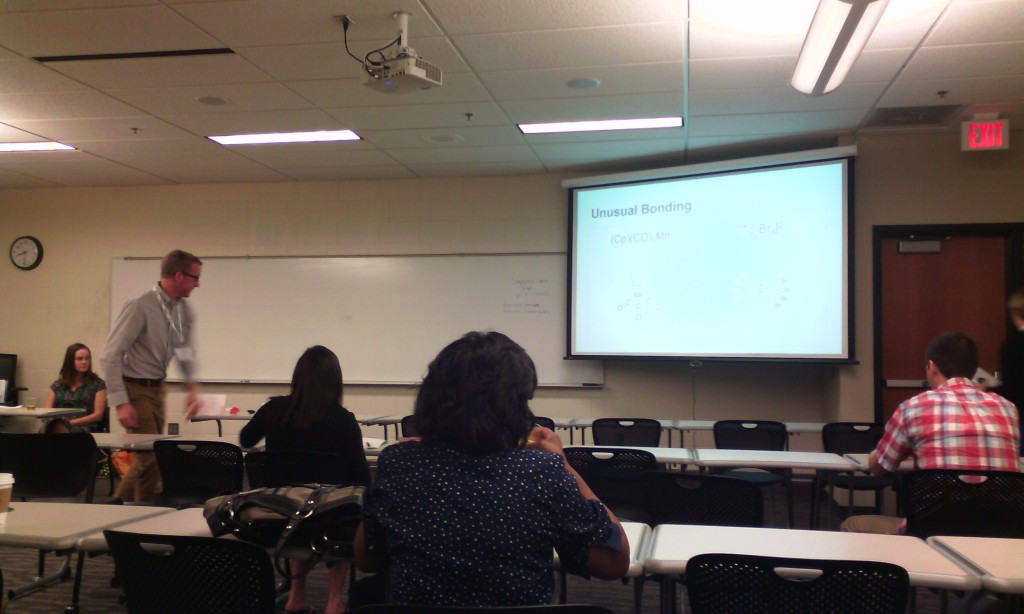
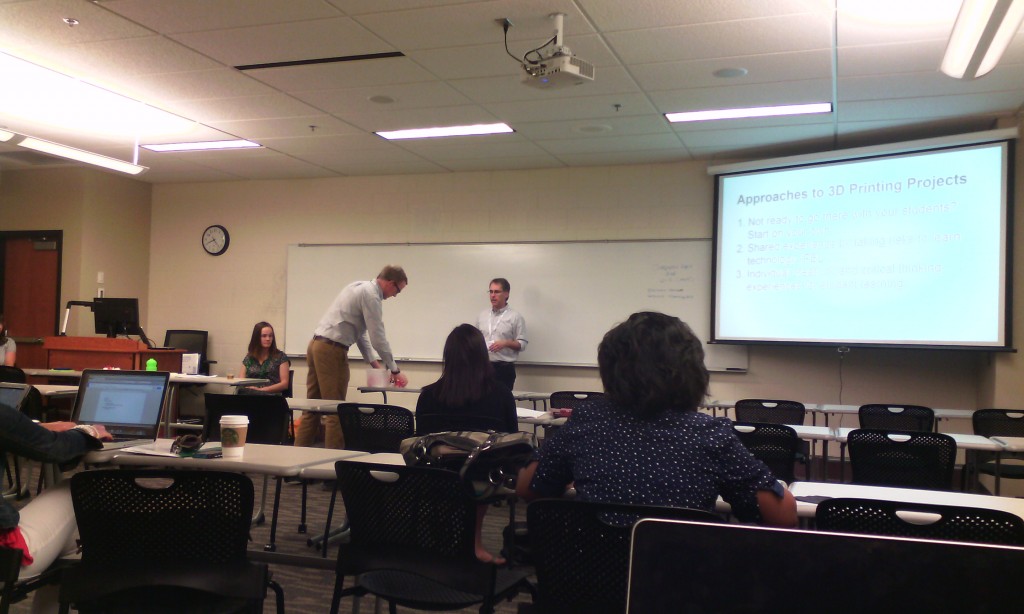
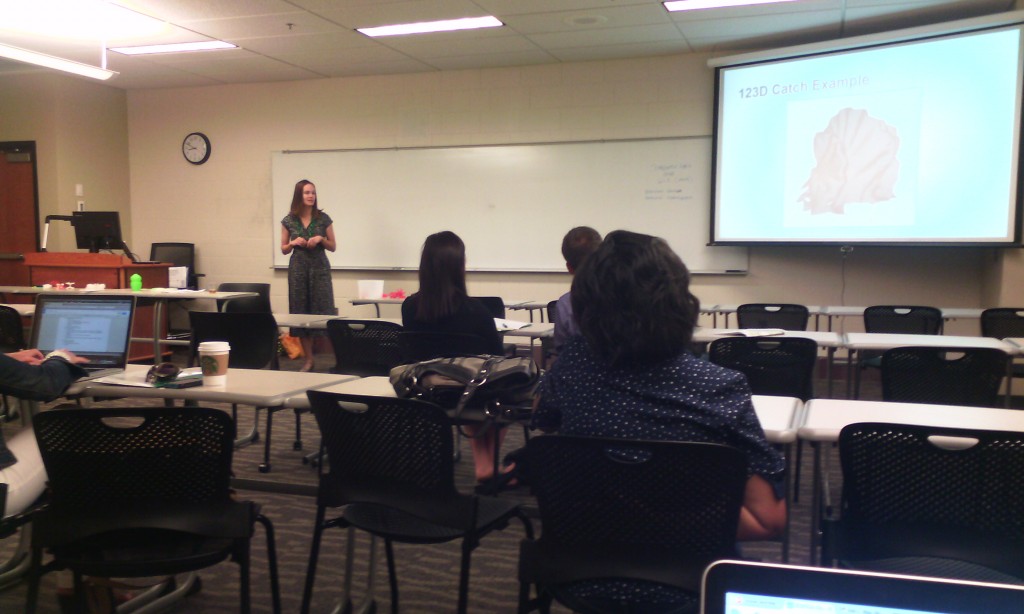
Jason Spartz, Saint Mary’s University of MinnesotaFollow
Lisa Truax, Saint Mary’s University of MinnesotaFollow
Karen Sorvaag, Saint Mary’s University of MinnesotaFollow
Brett Bodsgard, Saint Mary’s University of MinnesotaFollow
chemistry professor. 3D printing with different materials.
what else can be made (e.g. reaction vessel)
printing of atoms
crystalography dbase
Karen: pre-service teachers professor: how to use 3d printers and be comfortable with them. Steve Hoover. Thinkercad and Autodesk123D>
3D academy http://www.team3dacademy.com/index2.html. Pinterest board for3d Printing with resources
Lisa: graphic design. not intuitive. Rhinoceros (not free anymore). 123D strong learning curve. 3d printing will be incorporated in the curriculum. sculpture students and others don’t like fudging on the computer, but Adobe people love it. Some items takes up to 4 hours to print out. when working on the computer is difficult for some students to visualize the dimensionality.
collaborative learning opportunities.
no makerspace or fab lab. additional interest from the theater and business dept. 3d printing is connected to future work skills. new media ecology or media literacy set of skills.
the main presenter: build excitement and interest and gradually step back. how much material goes through and should we charge back. clean and maintenance involved; not too bad. better then a copier. plastic inexpensive. sizes with plastic – $25 and $50. how many project of a spool: depending on the size of the projects but considerable amount. two printers one art dept and one in the faculty dev area.
non profit visually impaired students. how 3d can make difference in special ed.
3d printing lab with access for everybody. ownership brings policy. where housed: neutral place.
only one printer is barely sufficient for faculty to figure out how to use it. purchasing two more if students and curricula to be involved.
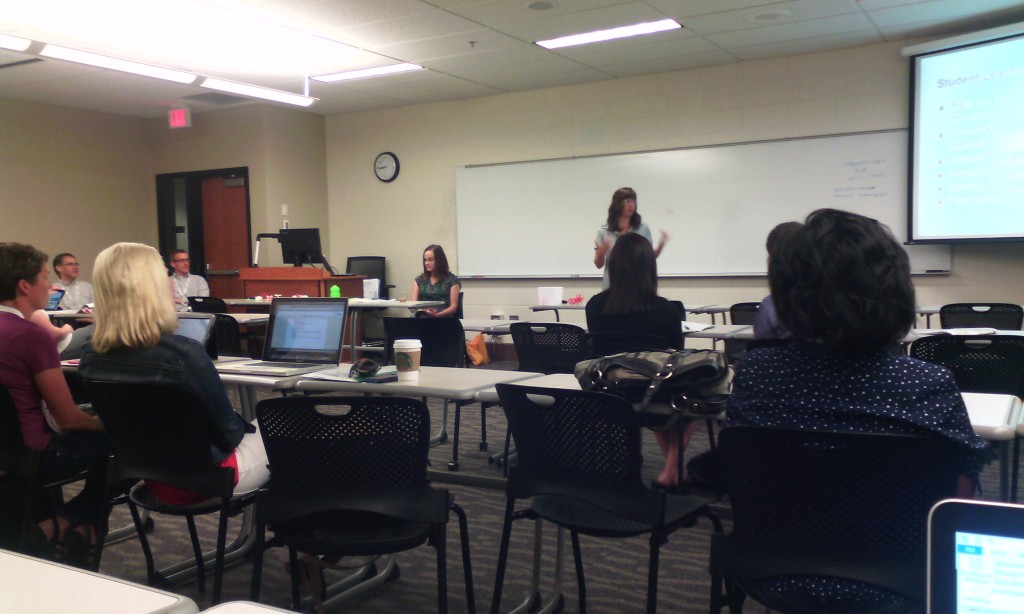



The Balancing Act: Team-Creating an eBook as an Alternative Method for Content Delivery Tom Nechodomu, University of Minnesota

Faculty Created digital stories – google “cultivaitng change series”
student created digital stories –
Susan Andre uses a slide titled “trust” to elucidate how the entire project was enabled. “trust” and “transparency” are sparse currency in the environment I work in. if she is right an ebook ain’t happening anytime soon at my place.
inclining habitat.
students involvement. use stipends. student artists. food for the video interviews. create a community, student centered.
people able to change the book.
copyright process; did you find it cumbersome. copyright permission center.
time span and amount of hours spent: 3-4 months per chapter.
Main speaker
David Wiley. Making Teaching and Learning Awesome with Open
MN Learning Commons
open educational resources
LUMEN
education – sharing feedback, encouragement with students passion about the discipline, yourself
open is not the same as free. free + permissions + copyright permission: 5 r = retain (make and own copies), reuse (use in a wide range of ways), revise (adapt, modify, and improve), remix (combine two or more), redistribute (share with others)
open:
free and unfettered access
perpetual, irrevocable copyright permissions
(look but don’t touch is not open)
tech enables OER permits
traditionally copyright materials on the Internet – not so good ; jet on the road
openly copyright materials on the internet _ yes: jet in the air
permission-less innovation. relatively inexpensive and broad permissions.
intellectual infrastructure of education: learning outcomes/objectives; assessments; textbooks. they are relatively expensive and narrow permissions.
disappearing ink strategies: buyback, rental, ebooks, online subscription
mad, glad, sad, rad: the grumpy cat. student success per dollar
opennetgroup.org/review
change in student learning: replace commercial with open books – small. realign, bigger change. rethink is the large change.
responsibilities:
attribution and meeting other license requirements
thin common cartridge: a way to bring the content to the CMS, but the content remains on the creative commons
disposable assignment: students hate doing them, instructors hate grading them. waste of time and energy
so what?
open education infrastructure: open outcomes, objectives, activities, educational resources
the culture of glued legos must be eradicated. open pedagogy. open credentialing model
summary: don’t settle for “affordable.” improve student outcomes. improve affordability. improve design / academic freedom
links generated from the discussion at my presentation:

































